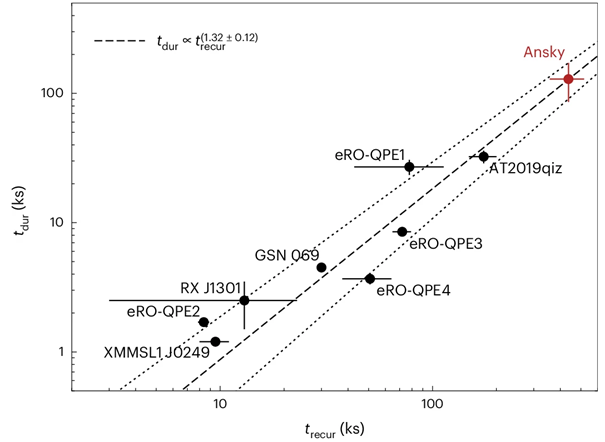Following Up with the Awakening Active Nucleus

In December 2019, researchers at the Zwicky Transient Facility (ZTF) identified the sudden brightening of the nucleus within galaxy SDSS J133519.91+072807.4 (hereafter Ansky). However, unlike other transient events, this variability persisted, prompting further investigations. In fact, this activity has been sustained over the past 5 years, much longer than any transient can reasonably be expected to last.
Last year, a study led by co-author Paula Sanchez-Saez first proposed the possibility of an active galactic nucleus, awakening from a dormant state. This study presented many promising pieces of evidence, such as complex light curves and a lack of spectral broadening, which pointed towards this conclusion. However, the study was not yet ready to discount the likelihood that this could be a transient event, such as a tidal disruption. However, if Ansky were indeed to host an AGN, we could now anticipate the upcoming stages of its awakening and verify this.
A new study led by Lorena Hernández-García presents follow-up observations that offer stronger evidence for AGN activity in Ansky. Hernández-García et al. present discuss more recent observations in the x-ray regime, identifying intense and variable fluxes. They attribute this to quasi-periodic eruptions (QPEs), intense bursts of X-ray emission. Such events are not uncommon and can often be attributed to transient events such as TDEs. However, the study explains that these QPEs are last longer and are far more luminous than any observed prior.

The study primarily utilises data from the Neutron Star Interior Composition Explorer (NICER) to construct a light curve of SDSS1335. By modelling the intensity peaks, the authors identified quasi-periodic eruptions (QPEs) occurring roughly every 4.5 days, each lasting about 1.5 days. These flares appear in groups of five, followed by a distinct gap, forming a superperiod.

The flare models included an amplitude parameter, enabling the authors to quantify and compare the brightness of the eruptions. They found that the ratio of each flare's peak luminosity to the quiescent luminosity of SDSS1335 exceeds previous QPEs by a factor of ten. This makes them not only the brightest but also the longest-duration QPEs observed to date.
The observed QPEs in SDSS1335 are likely driven by large stellar bodies, such as stars or stellar-mass black holes, crossing the accretion disk of the supermassive black hole. Their gravitational interactions with the disk material cause shocks that heat the gas to temperatures high enough to emit X-rays. This behaviour strongly suggests the presence of a newly formed or forming accretion disk around the supermassive black hole, providing further support for the AGN hypothesis.
As activity in Ansky progresses, the likelihood of witnessing the awakening of an AGN continues to grow. Although the authors remain cautious in making a definitive claim, they highlight that if this event is a TDE, it would have to be an exceptionally rare and exotic one. Alternatively, this could represent a novel type of transient event, offering exciting new possibilities for understanding high-energy astrophysical phenomena. Each scenario presents intriguing questions, necessitating further monitoring of the system.
--
Journal Sources: L. Hernandez-Garcia et al, Discovery of extreme quasi-periodic eruptions in a newly accreting massive black hole, Nature Astronomy, (2025), DOI: https://doi.org/10.1038/s41550-025-02523-9
P. Sánchez-Sáez et al, SDSS1335+0728: The awakening of a ∼ 106 M⊙ black hole, Astronomy and Astrophysics, (2024), DOI: https://doi.org/10.1051/0004-6361/202347957
Original article: https://telescope.live/blog/awakening-active-galactic-nucleus-real-time
Cover Image: ESO/M. Kornmesser
